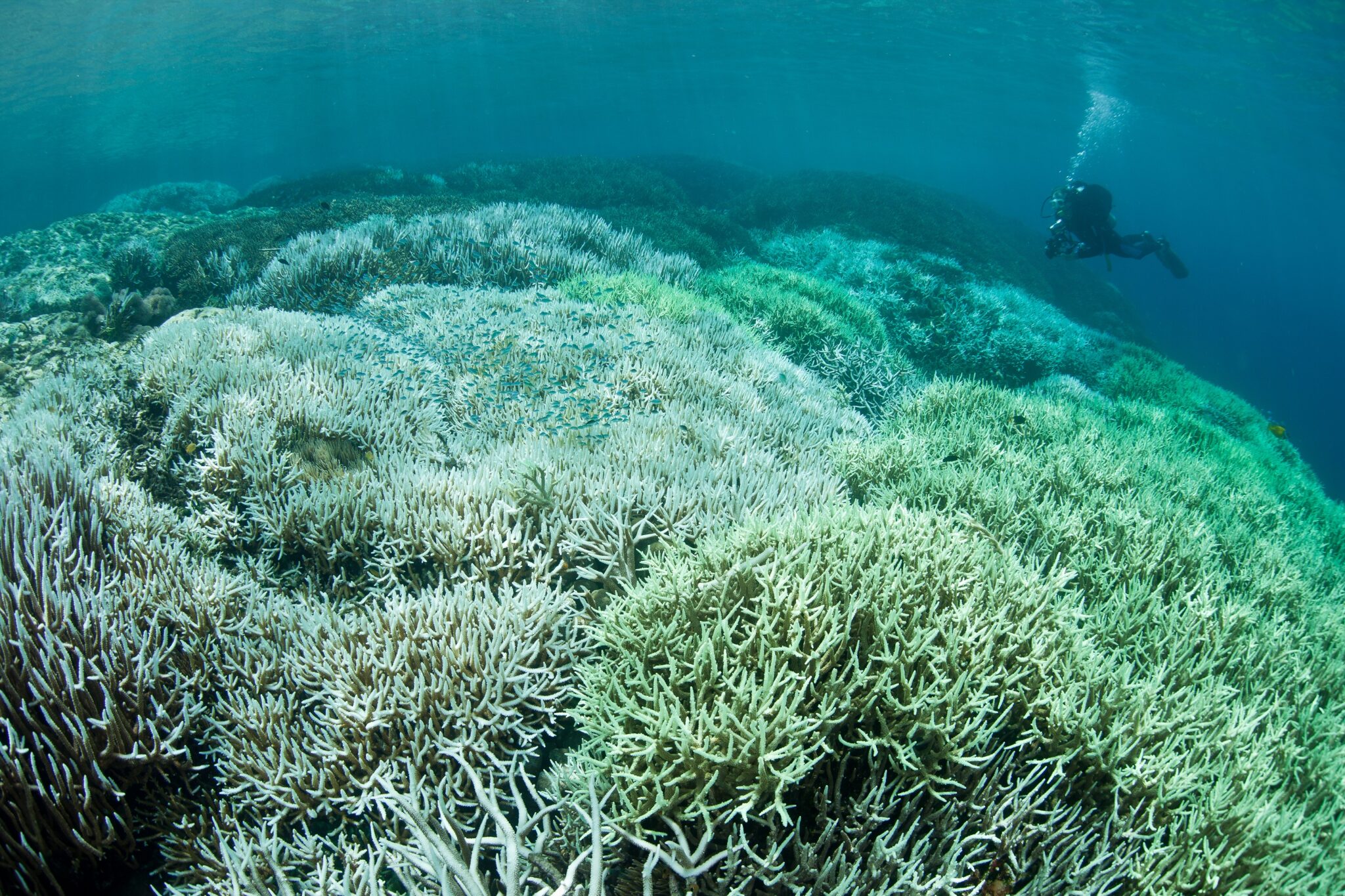
All over the world, coral reefs are under threat. To protect them, scientists and NGOs are exploring different avenues: organic tissue that mimics the structure of corals, study of different species, reproduction in the laboratory, etc.
The first One Summit dedicated to protecting the oceans opened its doors on February 9 in Brest. This large-scale international meeting focused on the need to conserve the oceans and marine ecosystems.
Among the most endangered underwater species, coral reefs top the list. Coral reefs are essential for biodiversity and human health and are severely affected by marine heat waves, which are increasingly recurring under the influence of climate change. The rise in water temperature leads to a phenomenon of ocean acidification, causing significant thermal stress on corals (ultimately manifesting as bleaching or dying of these reefs).
According to a study published Feb. 1 in the journal PLOS Climate by researchers at the University of Leeds, 99% of the world’s corals cannot withstand climate change† One of the most urgent solutions to protect corals is, of course, to drastically reduce greenhouse gas emissions.
Study the different types of coral to better understand them
But, according to research conducted by scientists at the University of Leeds, meeting the most ambitious target of the Paris Agreement (keeping the Earth’s temperature below 1.5°C) will not be enough to ensure the survival of corals. “It will rather be necessary to promote adaptation to higher temperatures and facilitate migration to ensure the survival of coral reefs,” the work’s authors believe.
A position that is in line with the postulate of various scientific studies conducted in recent years in the world to ensure the protection of corals. Notably, University of Wisconsin-Madison biologists published work in early 2022 studying the skeletal structure of three different coral species to determine which one is most resistant to the phenomenon of ocean acidification.
Scientists have found that this resistance can be linked to the rate of crystallization of the coral skeleton, made up of amorphous calcium carbonate. The more the bone structure crystallizes, the more likely it is to withstand ocean acidification.
One of the other avenues scientists took to increase the resistance of coral reefs was found in their microbiome. This is suggested by two American researchers at Penn State University, who have identified microbes that may be able to amplify coral species’ responses to thermal stress.
Lace to imitate corals
On the ground, rescue plans are funded to protect coral reefs. A solution that consists primarily in protecting the underwater areas with corals against human activities that could harm them, such as overfishing or mass tourism. In particular, in 2021 Thailand decided to ban chemical components that are toxic to marine life in sunscreens, following in the footsteps of the Palau Islands and the State of Hawaii.
Another angle is to cover certain reefs with organic and biodegradable substances that mimic the composition of corals. An experiment is currently being conducted in Guadeloupe. The idea is to create nets intended as a refuge for the coral eggs to fix them and protect them from predators. The NGO Ocean Quest Global has developed a method of cuttings to restore the natural habitat of the reefs.
However, a recent reconnaissance mission supported by UNESCO gives hope. Divers have discovered very rare coral reefs on the island of Tahiti, submerged more than 100 feet (30 meters) deep. Their particularity? They are in perfect health.
One of the reasons these reefs have been spared by global warming may be precisely related to the depth to which they have been submerged. Temperature sensors have been placed in the area of the identified corals to better understand how and why these reefs have withstood climate change, and in the hopes of finding others.
(ETX Daily Up)